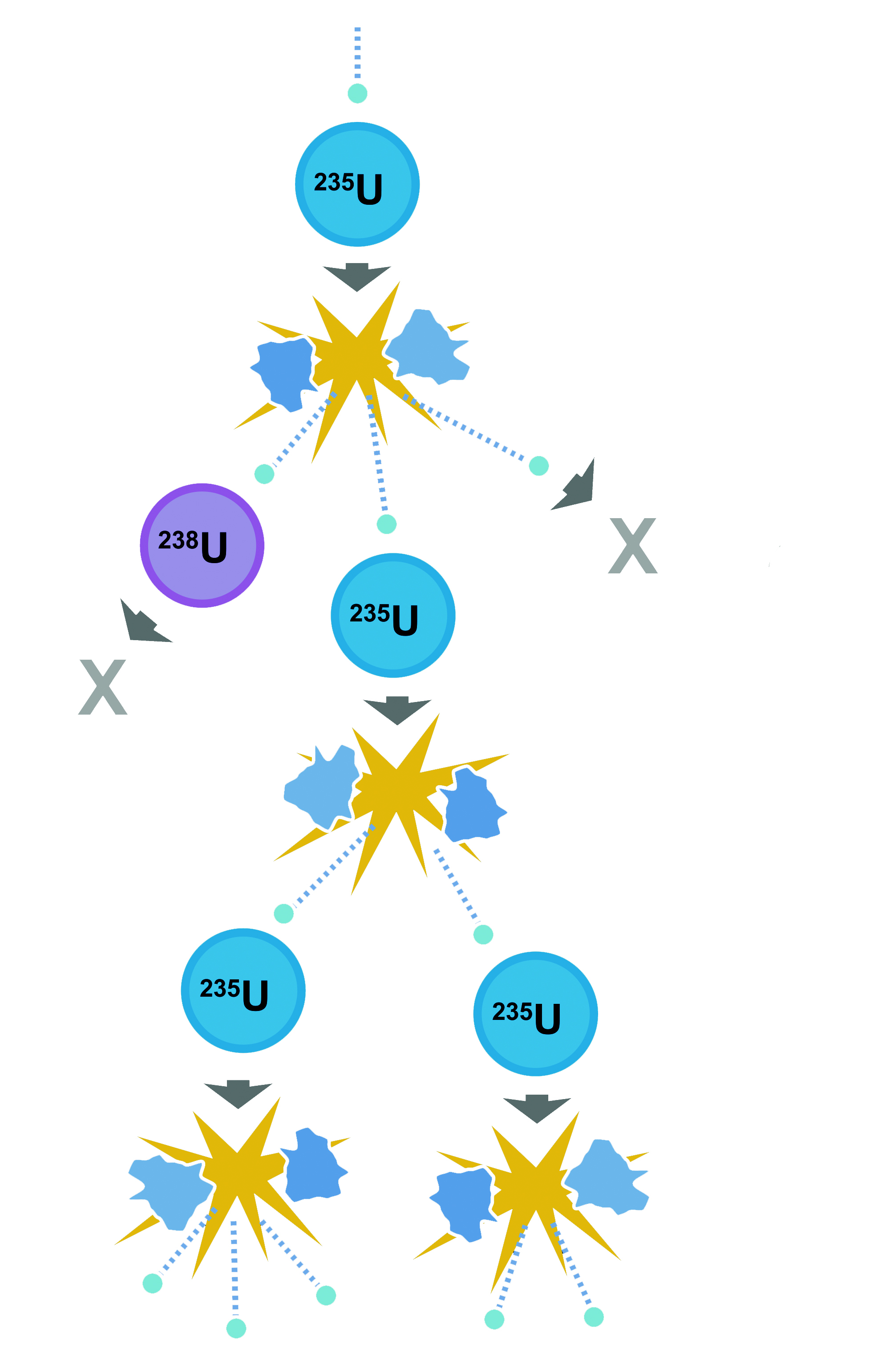

This means that some of the mass is converted to energy. So much energy is released that there is a measurable decrease in mass, from the mass-energy equivalence. When large nuclei, such as uranium-235, fissions, energy is released. At the same time, people often fear the dangers that could come with nuclear plants and do not want them in their area. Nuclear fission is the process of splitting apart nuclei (usually large nuclei). A nuclear fission reactor core, containing the combustible uranium at the bottom of the pool in the nuclear power plant of Civaux, central France, on April 25, 2016, during a control visit. However, the process creates a significant amount of nuclear waste that can be hazardous to both people and the environment. Uranium undergoes spontaneous fission at a. More commonly, fission is used to generate energy within a nuclear power plant. Nuclear fission occurs when one atom splits into two, creating energy. The knowledge itself is not overly complex, but the materials that fund the process are significantly more difficult to obtain. Since then, nuclear research has been considered extremely sensitive. Two subsequent atomic weapons were used as part of a military strike on the cities of Hiroshima and Nagasaki in Japan. During induced fission, a neutron is absorbed by the uranium-235 nucleus to make.

Known as the "Manhattan Project," the top-secret endeavor resulted in the formation of the first atomic bomb in July 1945. This is unsuitable for producing energy in a nuclear power station. In 1943, the Army Corp of Engineers took over the research for making a nuclear weapon. Roosevelt allocated money toward American research, and in 1941, the Office of Scientific Research and Development was formed with the aim of applying the research toward national defense. President Franklin Roosevelt at the start of World War II, drafted by Hungarian physicist Leo Szilard and signed by Albert Einstein, noted that such research could be used to create a bomb of epic proportions, and addressed the idea that the Germans could feasibly deliver such a weapon to the American doorstep. In an intellectual chain reaction, scientists began to realize the possibilities incumbent in the new discovery. A single impact could jumpstart a chain reaction, driving the release of still more energy. The heat released by fission is used to create steam that spins a turbine to generate electricity without the harmful byproducts emitted by fossil fuels. It generates power through fission, which is the process of splitting uranium atoms to produce energy. Ultimately, other physicists realized that each newly freed neutron could go on to cause two separate reactions, each of which could cause at least two more. Nuclear is a zero-emission clean energy source. You can change your cookie settings at any time by visiting Cookie. Working on the problem, she established that fission yielded a minimum of two neutrons for each neutron that sparked a collision. If you want more information about the cookies that we use then select Manage your cookies. Previous efforts by physicists had resulted in only very small slivers being cut off of an atom, so the pair was puzzled by the unexpected results.Īustrian-born physicist Lise Meitner, who had fled to Sweden following Hitler's invasion of her country, realized that the split had also released energy. In a surprising twist, they wound up splitting the atom into the elements of barium and krypton, both significantly smaller than the uranium that the pair started out with. Examples of nuclear fissioning of uranium-235. The heat is used to make steam to produce electricity. In 1938, German physicists Otto Hahn and Fritz Strassman bombarded a uranium atom with neutrons in an attempt to make heavy elements. It is this process, in effect burning uranium, which occurs in a nuclear reactor. Physics of Uranium and Nuclear Energy Nuclear reactors work by containing and controlling the physical process of nuclear fission. Material that can sustain a nuclear fission chain reaction is said to be fissile or fissionable.Radioactive fission, where the center of a heavy element spontaneously emits a charged particle as it breaks down into a smaller nucleus, does not occur often, and happens only with the heavier elements.įission is different from the process of fusion, when two nuclei join together rather than split apart. If this process continues, a nuclear chain reaction occurs. \): The fission of a large nucleus, such as U-235, produces two or three neutrons, each of which is capable of causing fission of another nucleus by the reactions shown.


 0 kommentar(er)
0 kommentar(er)
